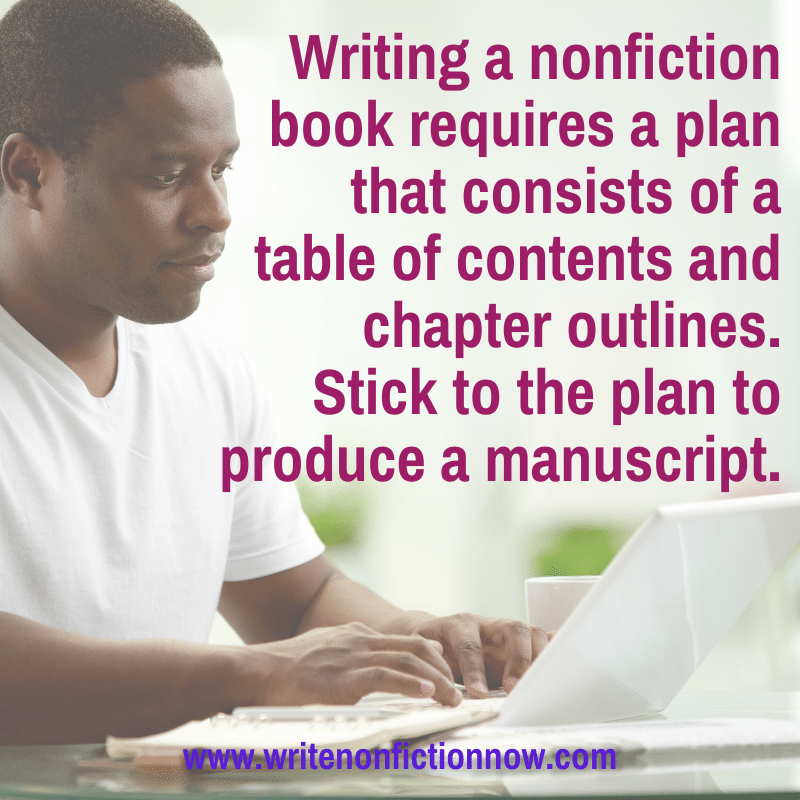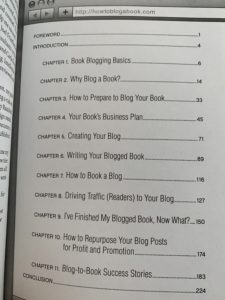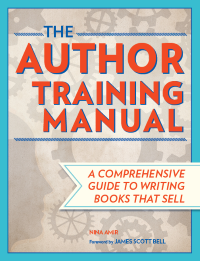 While some people like to write nonfiction books by the “seat of their pants,” the most prolific and productive writers plan their books’ content before composing a word. If you want to complete a manuscript effectively and increase your books’ chances of success, become a “planner” rather than a “pantser.” Create the table of contents and chapter outlines or summaries, and then start writing your nonfiction book.
While some people like to write nonfiction books by the “seat of their pants,” the most prolific and productive writers plan their books’ content before composing a word. If you want to complete a manuscript effectively and increase your books’ chances of success, become a “planner” rather than a “pantser.” Create the table of contents and chapter outlines or summaries, and then start writing your nonfiction book.
In Part 1 of this series on how to write a successful nonfiction book, I stressed the need to do some essential planning before you begin writing your nonfiction book. In Part 2, I explained that strategizing to meet your readers’ needs and fill a gap in the bookstore category increases your book’s chances of selling well.
With those two steps completed, it’s time to decide on your book’s structure and content. Then you’ll be ready to start writing.
Nonfiction Writer’s Challenge—Create the Structure and Content Plan for Your Book
To complete this nonfiction writer’s challenge, create a structure and content plan for your book by completing the following two tasks.
1. Create a table of contents.
A table of contents for a prescriptive or how-to nonfiction book takes readers from Point A to Point B. Point A is where they are now. Point B is where they want to go. You tell them, chapter by chapter, in a logical step-by-step manner, how to solve a problem, answer a question, or create some sort of change.
 If you write a memoir, you are taking readers from the point at which your story begins to the end, where you are transformed somehow. This also is like a step-by-step journey that takes you from Point A to Point B.
If you write a memoir, you are taking readers from the point at which your story begins to the end, where you are transformed somehow. This also is like a step-by-step journey that takes you from Point A to Point B.
Your table of contents might resemble a rudimentary outline. It will have sections and chapter titles, and that’s about it. You can learn how to develop your table of contents here.
Think of your book’s table of contents as the map readers use to navigate the content. Like the syllabus for a course, it tells them what to expect as they read the book.
Additionally, it’s part of your writing plan. The table of contents helps you write the book in a logical sequence. You are less likely to get off track if you have a map that gets you from Point A to Point B as you write.
2. Create a detailed chapter outline or chapter summaries.
Now, it’s time to take your table of contents a step further. Break each chapter into smaller pieces, and create a chapter outline. You can develop a bulleted topic list for each chapter if you prefer.
 Start by thinking of all the larger topics you want to cover in each chapter. These become subheadings. Then think about the smaller topics you need to write about to complete each subheaded section. Put this information into an outline format. Once you’ve done this exercise, you’ll have a detailed outline of each chapter.
Start by thinking of all the larger topics you want to cover in each chapter. These become subheadings. Then think about the smaller topics you need to write about to complete each subheaded section. Put this information into an outline format. Once you’ve done this exercise, you’ll have a detailed outline of each chapter.
Another way to go about this is to write chapter summaries, which are part of a nonfiction book proposal. Chapter summaries are like mini synopsis of each chapter. Typically, each summary is just 2–3 paragraphs long and might also include a list of subjects to be covered.
Ready to Write Your Nonfiction Book
Your chapter outlines or summaries are the second part of your writing plan and guide. The table of contents offers a big-picture view of the book’s structure and content. Your detailed chapter outlines provide a narrow-focus view of each chapter’s content.
Together, these two provide you with a complete writing plan and guide. Once you complete them, you are ready to compose your manuscript. Write from outline item to outline item, bullet to bullet, or one part of the summary to the next. Stick with the plan!
When you complete that exercise, you’ll have composed the first draft of your book.
Did this post help you plan out your table of contents and chapter outlines? Tell me in a comment below. And please share this post with other nonfiction writers you know so they, too, will get motivated take on this nonfiction writing challenge.
 Would you like to write and publish nonfiction work, like articles, blog posts, books, or reports…and become a successful author? Check out the Nonfiction Writers’ University. Get the basic education you need and the coaching to help you succeed as a nonfiction writer. Take advantage of monthly live educational and group coaching events. Enjoy a 30-day trial membership for only $1.
Would you like to write and publish nonfiction work, like articles, blog posts, books, or reports…and become a successful author? Check out the Nonfiction Writers’ University. Get the basic education you need and the coaching to help you succeed as a nonfiction writer. Take advantage of monthly live educational and group coaching events. Enjoy a 30-day trial membership for only $1.
Do you want a more advanced approach to your nonfiction writing education? Join the Nonfiction Writers’ University MASTERS program. Receive ongoing live Certified High Performance Coaching (personal development), Author Training, and Authorprenuership Training as well as monthly educational and group coaching events. Learn all the steps to becoming a successful—and profitable—author. Discover how (finally) to write consistently, boldly, enthusiastically, and productively. Develop the mindsets, strategies, habits of the world’s most successful writers. Click here to learn more.
Photo courtesy of Thought Catalog